Education Workshop in Karachi Pakistan
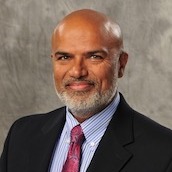
Zulfiqar Ahmed, MD, FAAP
Siromed/Anesthesia Associates of Ann Arbor
Director of Education and Pediatric Anesthesia
Wayne State University Anesthesia Residency Program
St Joseph Mercy Oakland Hospital
Pontiac, MI
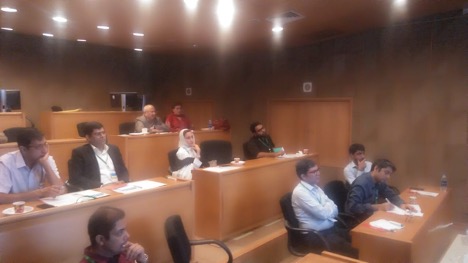
“The eye does not see what the mind does not know.” - Professor S.M. Rab
The Society for Education in Anesthesia has long had international reach, and its workshop on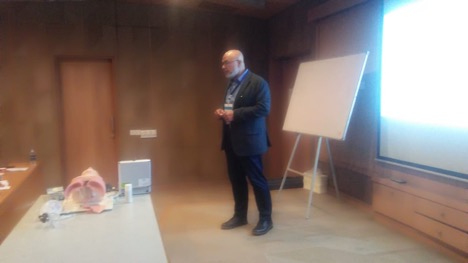 teaching was the direct inspiration for a recent workshop held in Karachi, Pakistan on December 4, 2019. “Teach the Teachers: An Update on Modern Medical Education” was led by Dr. Zulfiqar Ahmed from Wayne State University, and it was sponsored by Indus Healthcare, a privately run hospital that offers free medical care in the heart of this city of 18 million. Fifteen early-career anesthesiologists from multiple academic regional hospitals attended the three-hour workshop.
teaching was the direct inspiration for a recent workshop held in Karachi, Pakistan on December 4, 2019. “Teach the Teachers: An Update on Modern Medical Education” was led by Dr. Zulfiqar Ahmed from Wayne State University, and it was sponsored by Indus Healthcare, a privately run hospital that offers free medical care in the heart of this city of 18 million. Fifteen early-career anesthesiologists from multiple academic regional hospitals attended the three-hour workshop.
The first session introduced the context of teamwork and professionalism, and participants discussed characteristics of good teachers, including empathy, listening, and communication. Attention to both these skills and the learning style of trainees can enhance the learning environment. Cultural factors are also important to consider.
Different aspects of communication were highlighted in the two following sessions.In the 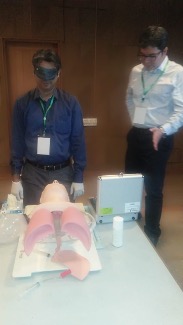 first, participants gave five-minute oral presentations on a topic of their choice. These presentations were used to illustrate components of effective presentations, including self-introduction, a clear statement of the topic, and elements of nonverbalcommunication. Constructive peer feedback led to an active discussion. The next session used a “blindfolded instructions” exercise and generated significantdrama and interest. A team of two people performed endotracheal intubation of a mannequin, with one catch. The operator was blindfolded and could only act by listening to and specifically following the verbal instructions of a colleague. The session powerfully showed the importance of specific instruction and principles of clear communication.
first, participants gave five-minute oral presentations on a topic of their choice. These presentations were used to illustrate components of effective presentations, including self-introduction, a clear statement of the topic, and elements of nonverbalcommunication. Constructive peer feedback led to an active discussion. The next session used a “blindfolded instructions” exercise and generated significantdrama and interest. A team of two people performed endotracheal intubation of a mannequin, with one catch. The operator was blindfolded and could only act by listening to and specifically following the verbal instructions of a colleague. The session powerfully showed the importance of specific instruction and principles of clear communication.
The relationship between learner and teacher was the focus of the final sessions. They included a discussion of Dr. Robert Wellinken’s rules of feedback and consideration of how a teacher prepares the learner to overcome uncertainty and complexity, using Cleave-Hogg and Benedict’s “Characteristics of good anaesthesia teachers”1 as a guide.
Special attention was paid to contextualizing the session in ways that would resonate withparticipants, such as the inclusion of words of wisdom from locally influential physicians. (Dr. Rab, whose quote is at the top of this piece, was Dr. Ahmed’s professor more than thirty years ago.) A verse by Baba Bulleh Shah, a Sufi poet, encapsulated a theme running throughout the workshop: while one can read all the books in the world, one must strive to understand oneself to be the source of guidance for the world.
Acknowledgements
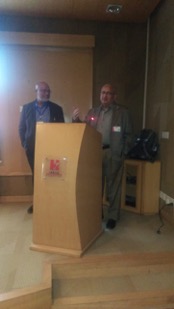
Dr. Saeeda Haider
Department Head
Indus Healthcare
Course Patron
Dr. Akhter Aziz
Special Assistant to the CEO
Indus Healthcare
Course Coordinator
Dr. Vinod Vankwani
References
1. Cleave-Hogg D, Benedict C. Characteristics of good anaesthesia teachers. Can J Anaesth. 1997 Jun;44(6):587-91. PubMed PMID: 9187776.


